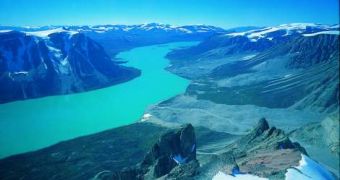Only yesterday, the journal Proceedings of the National Academy of Sciences witnessed the publication of a new study stating that, as a result of the global shifts in terms of environmental conditions and average temperatures, Greenland's ice coverage is melting at ever increasing rates.
After looking into how the ice covering Greenland “behaved” between 2002 and 2011, the researchers who have investigated this issue have concluded that the rate of melting is accelerating by roughly 9 billion tons each year, Our Amazing Planet explains.
Interestingly enough, these estimates failed to take into consideration the year 2012, which succeeded in breaking several records in terms of intense heats and extreme weather manifestations.
Specialist Christopher Harig, presently working with the Princeton University, made a case of how, “It's interesting because that's what is expected when you have a warmer atmosphere.”
“I would expect when I get that data [i.e. information concerning the year 2012], it'd show ice loss accelerating even more. Records keep being broken,” he went on to add.
The data used in coming up with these estimates was gathered with the help of satellite imaging.
Christopher Harig wishes to draw attention to the fact that, although it may take a while before all of Greenland's ice melts as a result of higher average temperatures worldwide (roughly 13,000 years, provided that environmental conditions evolve as predicted), the fact remains that current melting rates are quite likely to impact on our planet's oceans.
More precisely, this researcher goes as far as to argue that, should Greenland keep melting at this accelerated pace, the result might just be a 2.4 inches (6 centimeters) increase in global sea levels.
Even more worrying is the fact that said increase is quite likely to manifest itself throughout the course of this century.
“We're seeing firsthand the effects of the [warmer] climate on the ice,” this environmental scientist believes.

 14 DAY TRIAL //
14 DAY TRIAL //